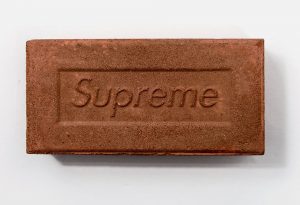Marketers have used the power of exclusivity throughout the ages to attract customers.
‘Limited editions’, ‘spontaneous, short-time sales’ and ‘platinum membership privileges’ are just the tip of the iceberg.
We take a look at some examples of exclusivity in marketing and how you can implement the concept into your business model – and reap the rewards.
Key Points
- Offering exclusive offers and privileges can stimulate repeat business
- Airlines have used the technique for decades, but not always perfectly
- Clothing brand, Supreme, shows how exclusivity can be a powerful tool
- Auto manufacturers are experts at creating a feeling of exclusivity through scarcity
- The concept can be implemented strategically to make sure no one is left out
- You can make use of the concept as a one-off event or a continual basis
Exclusivity in marketing
Creating a ‘you’re special’ feeling amongst customers and clients is gold for businesses. These special customers feel rewarded, privileged and committed, and often turn into loyal customers.
There are many ways to achieve this feeling within a target audience. Scarcity of products/offers is one way – offering products to customers who ‘qualify’ is another. Special memberships are yet another.
The result is customers who feel privileged to acquire a limited offer, or even just having the opportunity to. If they’re special enough to be in an exclusive club or offered limited deals, they’ll likely keep coming back to take advantage of such offerings.
A wide range of businesses from different industries implement exclusivity.
Airlines use exclusivity
And have done since 1939 when the world’s first airport lounge opened at New York’s LaGuardia Airport, hosted by American Airlines.
Those lounges and clubs at airports that offer complimentary food and shower facilities to members, pay for themselves when passengers stay loyal to an airline to access them.
Passengers typically pay an annual fee and, when armed with a boarding pass of that airline, can access the exclusive lounge. Fees are often discounted for high value members of an airline’s frequent flyer program, further adding to the privilege.
The result is loyal passengers who book exclusively through one airline. In return, they can expect to receive priority boarding and ‘premium’ seat selection.
But they’ve made mistakes
In 1981, the American Airlines Unlimited AAirpass offered unlimited first class travel, with lifetime membership offered for US$250,000. Holders of the card were reported to have cost the airline over US$1 million per year in lost revenue as they used companion seats for more leg room, took flights simply for meals or boredom and other spontaneous reasons almost daily. One holder accumulated over 16 million km in flights.
The program has been called “a huge disaster” for the company.
Supreme offers second-to-none exclusivity
Clothing brand Supreme doesn’t make huge numbers of its products, nor does it sell them in large retail stores. This keeps their apparel scarce and adds to the hype. The company could increase production and demand higher prices but have opted to keep limited editions affordable.
This converts foregone revenue into significant hype that leads to more brand equity.
Amazingly, Supreme offered an ‘exclusive’ clay house brick in 2016 for US$30 (around A$40). These bricks are now selling at over A$250 in secondary markets online. With 8000 bricks required for the average single-story home, build yours out of Supreme bricks for $2 million.
 (The Supreme brick. Source: steverosearchitect.com)
(The Supreme brick. Source: steverosearchitect.com)
Auto manufacturers are experts in creating exclusivity and hype
Almost all vehicle models have their own trim levels from a base model to a limited, luxury and / or sports variant.
As the trim level and features increase, so does the price. However, production numbers go the opposite direction.
For example, the Subaru WRX STI ‘Launch Edition’ saw only 1000 units made, all of which were quickly snapped up at a premium price. Other special editions were also launched with limited production numbers, like the WRX STI ‘Kanrai Edition’ with only 75 units.
The Toyota LandCruiser 200 Sahara Horizon special edition is another example. Only 400 units were built but have unique seat stitching, Horizon badging and other tweaks to attract cashed-up enthusiasts. Although originally priced from $131,896 before on-road costs, examples today are fetching around $180,000.
An out of the box idea is limiting sales to one day per year
The ‘Legend’ special edition series is a very exclusive truck offered by Kenworth. The manufacturer sells this special edition prime mover on one day per year only. This may seem counterintuitive when it comes to the standard sales approach, but what Kenworth have brought to market is an ultra-exclusive product – a product that stimulates high demand.
To date, Kenworth has released three special edition Legend trucks, the Legend 950 in 2015, Legend 900 in 2017, and the 50th Anniversary Legend SAR in 2021, with all three releases limited to purchase for 24 hours only.
In terms of sales, 75 units were sold in 2015, 267 in 2017, and over 700 for the 50th Anniversary Legend SAR in 2021.
Not bad considering the 2021 edition had a starting price tag of around $490,000.
Make exclusivity part of your offering
The idea often falls into two marketing categories, a one-off, limited deal or a special membership. Both can be advantageous to a business.
One-off, limited deals which create exclusivity follow a pattern:
- Parameters of the exclusive offering and target audience are calculated. For example, this might be a voucher for a camping store or free tank of petrol upon settled finance for SUVs aimed at young families.
- Social media and other online advertising sources like Google are used to get the message out prior to launch. The short time, usually a few weeks or less, keeps people interested and prevents the hype from dissipating. It also feels spontaneous and unplanned, urging people to act quickly!
- More information is released on social media in the days leading up to launch giving more details on how limited the initiative is
- The availability window is kept short and if customers miss out, they may still be able to get reduced rates / fees, albeit not as low as during the offering. These tight deadlines keep the hype and make it easier to build next time.
Tips
- Craft your exclusive offers so that they’re unique from others. For example, it might only be available during the final 5 days of a particular month and only in a specific area
- Make sure it’s beneficial for and in line with your target audience. Using the above mentioned family SUV finance example, imagery should be focused on families of the same target demographic in new SUVs. It might explain how a new vehicle is obtainable (for a short time) and increases passenger safety while allowing families to go camping on weekends
- Detail how people from outside the target audience can’t access this special offer. This helps create hype despite the fact that those people are not targeted
Membership
Another proven way of creating exclusivity is through memberships to specific (and limited) groups.
Although entry criteria should be strict, once in, people typically repurchase – assuming the benefits remain. This is a great way to build a loyal clientbase.
An example might be offering free petrol or a few hundred dollars off the cost of the next vehicle purchase for family and friends for three months upon settlement. Make sure to provide a professional email confirmation or something tangible with the client’s name on it detailing the exclusive membership.
Another example might be a car dealer offering a small percent off upon the next purchase of a vehicle over a certain price point. Like the example above, you could send monthly email newsletters reflecting their membership, to help people remember you as time goes by.
If your business offers monthly news emails, subscribers might get express service or other premium benefits.
Tips
- Make sure you list the membership details on your website and what they offer. For example, the ‘Diamond Club’ with how to get in and its benefits clearly visible on a website landing page.
- Differentiate from a simple promotion like ‘10% off your next purchase’ by giving the membership a name, consistent updates and clear entrance requirements.
- Don’t forget to create a member email mailing list, so you can send them member-only benefits. If the exclusive feeling wears off, people likely won’t recommend it to friends or remember it the next time they’re looking for finance.
In summary
Implementing an exclusive offer or membership in your business may seem like a large undertaking but it can really pay off.
When coupled with online resources and an efficient digitised business, creating exclusivity can be crafted, monitored and benefitted from with ease.
If you’d like some more tips on how to implement exclusivity in your business, get in touch with the Nodifi marketing team today: marketing@nodifi.com.au




